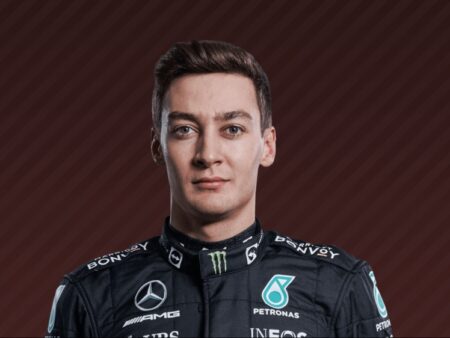“At the moment it just feels like we are passengers to the car.” This stark confession from Charles Leclerc after a dismal Singapore Grand Prix paints a vivid picture of Scuderia Ferrari`s perplexing 2025 Formula 1 season. With rivals Mercedes and Red Bull seemingly rediscovering their stride, the iconic Italian team finds itself in a precarious position, grappling with performance inconsistencies and the looming pressure of their devoted fanbase.
The Lingering Shadows of Singapore
The floodlit Marina Bay Street Circuit often delivers drama, but for Ferrari, the recent Singapore Grand Prix offered little more than frustration. Charles Leclerc finished a distant sixth, a staggering 46 seconds adrift of the race-winning Mercedes. The struggles were systemic, not isolated, with both Ferrari drivers (and notably, Mercedes` Lewis Hamilton) battling brake issues under the demanding, humid conditions. This wasn`t merely a bad race; it was a symptom of a deeper malaise, particularly stark when Mercedes and Red Bull, Ferrari`s historical and contemporary competitors, were celebrating podiums and victories.
The forthcoming USA-Mexico double-header looms, a sequence of races where Ferrari tasted victory just last year. Now, as an unwanted winless anniversary approaches, the contrast couldn`t be sharper. The question isn`t just about accumulating points; it`s about pride, direction, and Ferrari`s very identity as a top-tier F1 contender.
The Elusive “Step” in Upgrades
According to Leclerc, the root of Ferrari`s current woes lies in a critical “step” in car development that their rivals successfully made, and Ferrari evidently did not. While the latter half of an F1 season, particularly with significant regulation changes on the horizon for 2026, typically sees a tapering off of major upgrades, Mercedes and Red Bull have bucked this trend. Their tactical brilliance in development has exacerbated Ferrari`s plight.
- Red Bull`s Offensive: The dominant force introduced a crucial floor upgrade at Monza, followed by effective low-downforce rear-wing changes in Baku, and a new front wing for improved downforce in Singapore. These were targeted, effective enhancements that collectively transformed their performance trajectory.
- Mercedes` Resurgence: Not to be outdone, Mercedes revised their front wing at consecutive events, demonstrating an iterative, performance-driven development cycle that yielded immediate and tangible results.
Ferrari, by contrast, appears to have stalled. The outcome is glaringly evident in the points tally over the last four races, where Ferrari collected a mere 38 points, a figure dwarfed by Red Bull`s 96, McLaren`s 91, and Mercedes` 89. This isn`t just a slight dip; it`s a significant chasm that suggests fundamental issues in either their development strategy or their understanding of the current aerodynamic package, leaving them trailing far behind.
Leclerc`s Candid Assessment: A Cry for Action?
Seven seasons into his Ferrari tenure, with championship aspirations consistently unmet, Charles Leclerc`s words carry considerable weight. His assessment –
`Unfortunately, we are now the fourth team and solidly the fourth team… We didn’t manage to do that so it’s going to be a long end to the season.`
– is more than just a driver`s lament. It`s a stark, public acknowledgement of their competitive standing, a position far removed from where a team of Ferrari`s stature expects to be. One might even perceive it as a subtle, yet pointed, critique aimed at the technical departments and strategic leadership.
Such candidness can be a double-edged sword. While it highlights the team`s struggles for a demanding fanbase and hyper-critical media, it also places immense pressure on those tasked with engineering a turnaround. Is it a desperate plea for faster development, a subtle critique of the current technical direction, or merely an honest reflection of a difficult, inescapable reality? Regardless, it underscores the psychological toll of underperformance in the cutthroat, unforgiving world of Formula 1.
The Road Ahead: Salvaging Pride or Pursuing Progress?
With six race weekends remaining in the 2025 F1 calendar, Ferrari`s objective for the remainder of the season becomes a strategic tightrope walk. Is it about chasing fleeting podiums and one-off wins, perhaps fueled by track-specific advantages, or should their focus irrevocably shift to the monumental task of preparing for the 2026 regulation changes? The latter, a pragmatist might argue, is the only sensible path for a team with championship ambitions.
The upcoming North American races offer a potential glimmer of hope, given past successes at these venues. However, relying on circuit characteristics rather than fundamental car performance is a band-aid, not a cure for chronic underperformance. The true measure of Ferrari`s remaining 2025 campaign will be their ability to accurately diagnose their issues, demonstrate a clear understanding of their car`s limitations, and implement solutions, however small, that hint at a more competitive future. It`s less about winning the championship this year, an increasingly distant dream, and more about laying the groundwork to not be “passengers to the car” when the seismic 2026 rules roll around.
The tifosi demand passion and performance. For Ferrari, the remaining races are not just about points; they are about restoring faith, both internally among the team and externally among their global supporters, that the Scuderia can still engineer its own destiny and return to its rightful place at the pinnacle of motorsport. The pressure is immense, and the world of Formula 1 watches with keen interest to see if the Prancing Horse can rediscover its gallop before the curtains close on a challenging 2025 season.










